Beijing Tourism Information

China’s massive capital, has history stretching back 3 millenniums. Beijing, is the centre of the nation's politics, culture and international exchanges and a modern metropolis full of vitality. It's population reaches nearly 22 million people in the city area, one of the biggest cities in the world! It's known for its ancient sites such as the grand Forbidden City complex, the imperial palace during the Ming and Qing dynasties, the massive Tiananmen Square and of course the Great Wall of China located in the outskirts of the city.
It's truly a ginormous city, which will impress you for its size, culture, tastes, sights and even smell!
The famous capital of the People's Republic of China, has a continental climate influenced by the monsoon winds. Beijing experiences hot humid summers and cold, dry, and windy winters. Despite the alterations in temperatures, the sun can shine all year round, and in spring, particularly, it gets warm and dry, and it is sunny with minimal precipitation in autumn.
Temperatures get very low in winter, sometimes coming to as low as -15°C especially at night, though in the city this is not as extreme, due to the pollution. Although it remains sunny through winter, sometimes it snows, and there is an occurrence of the prevailing cold winds from the Mongolia desert. Spring is a lot warmer with temperatures going as high as 21°C. Summers however, although they are hotter, they come with the winds of the monsoon season bringing high rainfall and high humidity. The monsoons are irregular and vary from year to year; the rainfall may vary in intensity depending on the monsoons. When it is not raining in summer, it gets scorching with temperatures going up to as high as 40°C!
The best time to visit Beijing is in spring and autumn. In spring, temperatures range between 7°C and 26°C, making it a perfect time to enjoy the warm, pleasant weather. This period marks the best time to visit the numerous historic sites and museums, indulge in activities in the Kunming Lake, and even hike the Great Wall. Expect large crowds of incoming tourists and locals who could not brave the winter cold. In autumn, the weather is pleasant as well with temperatures falling between 10-25°C. It gets less windy and less rainy making it the best time for visits to all the scenic spots in the city.
❗Attention: Beijing is one of the most polluted cities in China, traffic levels are very high and together with factories make a dirt smug like cloud over the city colouring the cities sky's in a creamy and grey colour. Not only this can be hard to breath but the city also suffers from a dry climate making it very dusty. It's for this reason it's recommended that if you suffer from respiratory problems or asthma to wear a mask and take care when travelling to Beijing.
People often wonder why Chinese have the dirty habit to constantly spit to the floor, now you know the answer, due to the dirt, dust and pollution in the air! However, by political influence and image China is now tackling climate change and there are more limitations on the factories which expel the harmful gasses to the environment. It's possible to appreciative clear blue sky days as well when there are public holidays, political meetings or special events in the city.
The first thing to take into account is the size of the city, traffic in Beijing is always heavy and commuting by public transport, despite being cheap, can seem a headache by the amount of people and lack of seats! (specially at peak times). Planning in advance and downloading the maps of the transport is advised before you travel in Beijing. At first it might look complicated by the language, but now a days everything is translated into English, at least the metro and the trains. Busses have still some time to get adapted and have translation into English but they are modern and frequent.
Even the city centre in Beijing is very large, so you might even consider transportation to move around it, or walk kilometres from one place to another! The ideal transport mode is the bike in fact! Now you can easily download APP's that let you rent bikes on the street. You will be able to recognise these bikes by their distinctive bright colours. There are also public bike docks, they are red or blue bikes mostly, which you can rent, but these have the disadvantage that you need to leave the bikes at specific docks only. (not as popular).
First of all, when arriving to the main airport (PEK) there is a direct airport rail link which is express. It costs CNY 25 (€3.50) and it will take you to Dongzhimen station,from there you can connect to the rest of the subway to your nearest station. it operates daily from 6.30am to 23pm approx. If you arrive later there are night busses which ride to the suburbs of the city, but unfortunately don't reach the city centre. Therefore if you're staying central you will need to take a taxi. (make sure to get official certification taxis only). A taxi from/to the airport will cost around 80-100 CNY.
There are also busses which connect to other cities from the airport, so there is no need to travel into Beijing to transfer again. You can go direct to cities like Tianjin, Tanggu, Qinhuangdao, Langfang, Baoding, Tangshan or Cangzhou. Check at the airports arrival level for tickets.
The subway is cheap, clean and effective in Beijing. Operating from 5.00am to 23.15pm every day. If you are staying a bit longer and want to use the transport often then its recommended you buy the electronic card for Beijing Transport (valid for Metro and busses). It costs 20 CNY plus any amount of top up money to travel. Each ride costs around 3-8 CNY. The metro would be your main way of transportation within the city as local busses can be harder to interpret where they go unless you get good info beforehand or travel with locals. Check the subway map of Beijing with the below link:
Beijing is a great city noted for the rich heritage of oriental history and culture. As early as three thousand years ago, a primitive tribal community started to take shape here. From 900 A.D. onward, Beijing served first as the secondary capital of the Liao Dynasty (916-1125) and then capitals of the Jin (1115-1234), Yuan (1271-1368), Ming (1368-1644) and Qing (1644-1919) Dynasties successively. Beijing was made the capital of the People's Republic of China which was founded on October 1, 1949. Beijing is one of the most visited cities in the world for its ancient culture, renowned historical buildings, the famous Great Wall of China, massive parks and gardens and more recently the Olympics venues.
The following highlights are the most important sites when visiting Beijing:
- Forbidden City was the Chinese imperial palace from the Ming dynasty to the end of the Qing dynasty, from 1420 to 1912. It is located in the centre of Beijing and now houses the Palace Museum. Enter via The Tiananmen monument, the symbolic, famed gateway to the Forbidden City which dates back to the 15th century but rebuilt many times. Going in the morning is better as the place will get very busy with thousands of tourists visiting at the same time.
✔️Tip: Now it's essential you book your visit online as they only allow 80.000 visitors per day! Ticket costs ¥60 per adult. Buy at this website: Forbiddencityticekts.com
- Tiananmen Square, it is a ginormous square, one of the 10 largest squares in the world, is best known for the Tiananmen Square Massacre, an armed suppression of a pro-democracy movement in June 1989. It's named after the Tiananmen ("Gate of Heavenly Peace") located to its north, separating it from the Forbidden City. Inside it contains the Monument to the People's Heroes, the Great Hall of the People, the National Museum of China, and the Mausoleum of Mao Zedong.
❗Attention: When visiting the Tiananmen Square or the Forbidden City remember to take your passport with you. There are bag inspections as you enter the perimeter of the square and the security there will ask you for identification document. Note that also it is a legal requirement to have your passport with you at all times in China.
- Qianmen street, a pedestrian street not far from the Tiananmen square where you will find, souvenir shops, local tea houses, restaurants and retail shops. At the entrance is a gate, part of Beijing's historic city wall. Qianmen Street runs along the Beijing central axis. It is one of the last remnants of the business centres of the old Beijing. Places like the Guanghe Theater, today threatened with demolition, and the Quanjude roast duck restaurant are part of Beijing’s history. Trolley cars are back to transport and entertain tourists on weekends and public holidays.The area is home to 50 courtyards and hutongs listed as state-level heritage sites, as well as 80 famed shops that have been operating for over a century, such as the Lubiju sauce and pickle shop, Tongrentang drugstore, Ruifuxiang silk shop, Neiliansheng shoes store and Zhangyiyuan tea shop.
- Beihai Park, has a history of more than 1,000 years. This park was built up through five dynasties, the Liao (916-1125), the Jin (1115-1234), the Yuan (1271-1368), the Ming (1368-1644) and the Qing (1644-1911). Though it was a royal garden, it remains grand with a hint of exquisite elegance as well. It covers an area of 69 hectares with over a half covered by water. The whole park can be divided into four scenic areas: Qionghua Islet (Jade Flower Islet), Circular City, the eastern bank area and the northern bank area. A white pagoDa which stands out on the top of the islet is the symbol of the park. This Lamaist pagoda, 35.9 meters (117.8 feet ) high was built in 1651. In the southeast of the park, the Circular City is surrounded by a wall and is in fact an exquisite garden. Take your time here, there is a lot of beauty to take in and although it's not as big as other parks, there is substantial walking. Entrance to the park is ¥10 per adult. Closest metro station is Beihai North. (line6).
- Tiantan Park, known better as the Temple of Heaven, is one of the most brilliant ancient architectures in China. It is also an outstanding masterpiece of classic imperial buildings throughout Chinese history. The site was firstly built in 1420 by Yongle Emperor, then expanded by the subsequent emperors of both Ming and Qing Dynasty, and had served as the holy place for emperors to pay homage to Heaven and to pray for a year of rich harvests. The Temple of Heaven is not only one building or site, it's a combination of several religious temples, gates and buildings all located in the massive Tiantan Park.
To visit the Temple of Heaven and the main sites costs ¥34 for a combined ticket for the park and the temple buildings. If you want to only visit the park grounds and see the temples from the outside it's ¥15. (plus ¥20 if you then decide to pay separately for the temples). Note it's a very big area, it takes at least 2 hours to visit the entire complex. Closest metro station is Tiantan East Gate. (line 5). The 3 main sites are:
Qinian Hall (Hall of Prayer for Good Harvests). It is a wooden triple-gable circular pavilion which is 38 meters high with a three-level marble stone base. The ancient emperors prayed for good harvests here.
Huang Qiongyu Hall (The Imperial Vault of Heaven) is smaller with only one circular gable and one level of marble stone base compared with Qinian Hall. It is the place to enshrine the worshiping tablets of Gods.
Huanqiu Altar (The Circular Mound Altar) is an empty circular platform with three levels of marble stones. Vivid dragons were carved on the stones to stand for the emperors.
Another place of interest in Tiantan Park is the Hall of Abstinence, it's next to the west gate of the Park of the Temple of Heaven. It was a place for the emperor to abstain from food before the Worshipping Heaven Ceremony started. It has several distinctive buildings, such as the Beamless Hall, the Rest Palace, and the Belfry. The objects in the buildings such as the throne, the screens and even Qianlong’s ink brushes, are all original. Entrance to this Hall is free, however visitors need to show passport in order to get an entrance ticket.
- The Summer Palace, a vast complex of gardens, lakes, hills and palaces in Beijing. It serves as a popular tourist destination and recreational park. The palace is the place of emperors and his families of Qing Dynasty for a summer retreat. Not only the landscape, but also the designs of Summer Palace are the best masterpieces among all the ancient gardens. Constructed around the Longevity Hill and Kunming Lake. It costs ¥30 for the entrance fee per adult. Closest metro station is Beigongmen.(line 4).
There is much to see at this complex, the highlights are:
Renshou Palace (Hall of Benevolence and Longevity): Situated at the left side of the entrance of eastern gate. It used to be the place where court sessions were held during the reign of Qianlong Emperor and Guangxu Emperor.
Leshou Palace (Hall of Joy and Longevity). Facing the Kunming Lake, back against the Longevity Hill, Leshou Palace was the palace where empress Cixi lived.
Yulan Palace (Hall of Jade Billows): Located west of Renshou Palace, Yulan Palace served as the living quarters of the Qing emperors. The empress Cixi once confined the emperor Guangxu here for 10 years.
Longevity Hill, this 58-meter high hill is the seat of some most important buildings of Summer Palace located on the front and back hills, including Paiyun Pavilion, Foxiang Pavilion and some Tibetan Buddhist temples.
Kunming Lake, it is the body lake, and covers more than 3/4 the entire size of Summer Palace. Three small islands sit in the lake standing for three holy mountains in ancient mythology legend.
Foxiang Pavilion, this 41-meter high pavilion is a Buddhist temple for royal families to worship to the Buddha in Qing Dynasty. It has 8 stories, was propped up by 8 huge wooden pillars. The design and decoration inside is fabulous.
Long Corridor, it lies at the southern foot of Longevity Hill facing the Kunming Lake. The corridor is regarded as the longest of its kind in the world with a total length of 728 meters. More than 14,000 paintings of famous places and known story from legends, folktales, novels, etc, hang on the corridor.
17-Arch Bridge, at 8 meters wide and 150 meters long, the bridge is the largest and longest bridge in the Summer Palace with 17 different types of arches. It incorporates features of the Precious Belt Bridge in Suzhou and the Lugou Bridge in Beijing.
❗Attention: Visiting the Summer Palace can't be taken as a quick visit. It's a vast complex with lots to see. The visit alone can take 2-3 hours to see it all, walking around, admiring the views, beauty and taking pictures.
- Jingshan Park: translated literally to "Prospect Hill," also known as Coal Hill, is located across the street from the exit of the Forbidden City. The park was a part of the Forbidden City until the early 1900s when the walls were pulled down and a road cut through it, destroying several gates and buildings between the park and the rear entrance of the palace.Just north of the Imperial Palace, the site was a private park reserved for the use of the emperor in the Yuan dynasty (1279-1368). During the Ming dynasty (1368-1644), an artificial hill with five peaks was made, utilizing earth excavated when the moat of the Imperial Palace was dug. This gives the site a unique character, at the top of the hill, the Pavilion of Everlasting Spring, affords stunning, panoramic views over Beijing and the Forbidden City. The park is pleasant to stroll around, popular for locals and visitors alike. It's entertaining to come across groups of elderly Chinese people dancing, singing opera, or doing tai chi even! The hill, can get quite crowded, particularly at sunset on a clear day when many photographers try to catch the last rays of light falling on the rooftops of the Forbidden City. Entrance fee is ¥2 . Closest metro station is Nanluoguxiang station (line 6 or 8).
- The Yonghe Temple, also known, as the Lama Temple, is a monastery of the Gelug school of Tibetan Buddhism located in Dongcheng District.The YongHe Gong building was built in 1694 as the residential palace of Prince Yin Zhen. In 1723, when the prince became the Emperor Yong Zheng and moved into the Forbidden City, the building was repainted in imperial yellow and converted to a temple (as was the usual custom).It became a Buddhist monastery in 1744, housing Buddhist monks from Tibet and Inner Mongolia. After the Civil War in 1949, the temple was closed and declared a national monument. It remained closed for 30 years, after which it was reopened mainly as a tourist attraction. The Yonghe temple is an attractive complex of progressively larger buildings topped with ornate yellow-tiled roofs. The Yonghe Gate dates from 1696 and has statues of celestial guardians. Inside are prayer halls, courtyards, and several rather beautiful incense burners. The Falun Dian (Hall of the Wheel of Law), second to last of the major buildings, contains a 6m bronze statue. The last and grandest of the five central halls is the Wanfu Ge (Tower of Ten Thousand Happiness's), which houses the temple's prize possession, a huge Tibetan-style statue of Maitreya (the future Buddha), 18m tall. It is carved from a single piece of Tibetan white sandalwood and it took three years to ship it to Beijing. Entrance fee is ¥25. Closest metro station is Yonghegong Lama Temple (line 2 or 5).
✔️Tip: Incense is giving for free to everyone who visits the temple, either for religious worship or tourism
- Shichahai Area, (Hutongs) In the modern city of Beijing lies a place where you can still see the authentic old Beijing. The place is known as Shichahai Area where most local residents still live in traditional courtyard-style houses dotted along old hutongs. You can go around those existent hutongs either by rickshaw or on foot.You can visit local families, eat home cooked lunch or learn Beijing folk arts (Papercutting, Inside Painted Snuff Bottles, Shuttlecock and Yoyo). Closest metro station is Shichahai. (line 8).
✔️Tip: Some of these activities it's only possible to arrange by booking tours.
What is a Hutong? You will see and hear a lot about Hutong, during your visit in Beijing. Hutong (胡同) is also called “lane” (里弄) and “alley” (巷), meaning the narrow streets leading to the inside of the residential areas between the main streets in the town. Hutong originated from Yuan dynasty (1271 -1368), when the Mongolian in Dadu (the national capital at that time) called most streets hutong, meaning the well in Mongolian language. And it said that the Mongolian people dug many wells for more water resource that time, so it got the name of Hutong.
✔️Tip: Visit Nanluoguxiang, also known as South Luogu Lane, is one of the oldest alleyways in Beijing. It's 800 metres long, with cafes, bars, and shops all designed in classical Chinese 'hutong' style. With a history of over 800 years, Nanluoguxiang has become a hotspot for visitors because the area offers a wide range of eateries, local Chinese handcraft, Tea shops and souvenir shops, all set along nicely decorated streets with red lanterns.. With its impressive historical reputation and cultural influences, Nanluoguxiang is a popular attraction now in Beijing. Closest metro station Nanluoguxiang (line 6 or 8).
- Wangfujing Street, is one of the symbols of Beijing's commerce, it is a well known shopping street with modern and fashion trends. Located near the city center in Dongcheng District, the street is one of four most prosperous business zones in Beijing. It is 1,600 meters long ranging from Chang'an Avenue in the south to National Art Museum of China in the north. On the street you will find the Wangfujing Cathedral, this small church dates back to 1653 when it was first built by the Jesuit Father Ludovico Buglio. It was then rebuilt in 1904 as a Romanesque cathedral. However Wangfujing Street is more renowned for its international top brands, pedestrian areas, shopping centres, food courts and entertainment options, as well as the popular Dongmen Street (where the Dongmen Night Food Market is located). Dare to try some of it's exotic snacks like scorpions and other insects! Only for those with strong stomachs!
- Highly recommended is the Beijing National Stadium and tower. Also known as the Bird's Nest, the stadium was designed for use throughout the 2008 Summer Olympics and Paralympics and will be used again in the 2022 Winter Olympics and Paralympics. The stadium is currently mostly unused but during the evenings it illuminates in a very colourful display. It's a nice stroll at dusk time and where to enjoy some snack bars along the way. Free entrance to the Olympic grounds only. Closest metro station is Olympic Green (line 8 or 15).
✔️Tip: Taking a tour of Beijing and the many attractions which it has to offer, is a good way to save time if you are staying for a short while. There are many companies and agencies which offer these tours. However for the amount of tours, options, quality and price we can recommend you book with TravelBeijingtour.
They have loads of different tours to suit everyone's needs, duration and points of interest to visit (including the Great Wall). You can reserve online without any prepayment needed and pay in cash on the day of pick up.
Introduction: Is the must see destination when travelling to Beijing. Probably even the highlight of any trip in China. The wall itself is a series of fortifications made of stone, brick, tamped earth, wood, and other materials, generally built along an east-to-west line across the historical northern borders of China to protect the Chinese states and empires against the raids and invasions of the various nomadic groups of the Eurasian Steppe. Especially famous is the wall built 220–206 BCE by Qin Shi Huang, the first Emperor of China. Little of that wall remains. Since then, the Great Wall has on and off been rebuilt, maintained, and enhanced; the majority of the existing wall is from the Ming Dynasty(1368–1644).
Other purposes of the Great Wall have included border controls, allowing the imposition of duties on goods transported along the Silk Road. Furthermore, the defensive characteristics of the Great Wall were enhanced by the construction of watch towers, troop barracks, garrison stations, signalling capabilities through the means of smoke or fire, and the fact that the path of the Great Wall also served as a transportation corridor.
The Great Wall stretches from Dandong in the east to Lop Lake in the west, along an arc that roughly delineates the southern edge of Inner Mongolia. A comprehensive archaeological survey, estimates that the Ming walls measures 8,850 km.
Getting there: taking public transport to the wall, is practically, a challenge in itself and may result very frustrating, time consuming and a trip in crammed busses and small seats not suitable for visitors. There are busses which depart from central Beijing, but you would need to change one or twice to get to the wall. Therefore it's advised you should organise a tour from Beijing city as the main transportation way, within the tour it may include other visits. However if you want more time at the wall to hike and walk around the towers, you should book and enquire to organise for the Great Wall only. When visiting the wall most tours will take you to the Badaling section of the wall which is the best preserved section. It's approximately 1,000 meters over sea level, and takes a strategic position for transport and security in the past. Badaling, practically means to get to eight directions. Another popular choice is the Mutianyu wall section, 22 watchtowers on this 1.4 mile stretch of Wall. There are holes by the wall,used to fire attackers on both sides, which represents the strategic military use of the wall.
Mutianyu Wall Section Experience: When arriving you have the option to take the cable or walk. Cable car is ¥100 (not included in the tours) and takes you to tower 14. If you opt to walk, it will take around 20 min to the top, near tower 8 or 10. Once you reach the wall, you can take either direction, left or right, going left towards tower 20 is harder, but the best views are obtained from here. The section after tower 20 is cut off and is not restored yet. However only professional climbers and tours are allowed to visit this part. The duration from tower 10 to 20 is an easy 90 minutes one way. This Ming fortification section of the wall is heavily renovated. The scenery is impressive with the wall winding off over the hills in the distance. Walking back is easier, as well as the walk from tower 14 to 6, mostly downhill and less stairs. Next to tower 6 you will find the cable car to go back or you can also take a slide, (toboggan) which costs ¥100 (not included in the tours). It's a fun way to return for those seeking a bit of fun after a lot of walking! If you are not taking a tour, it's also possible to walk towards tower 1, despite this section (tower 6 to 1) also being harder. After tower 1, the wall is cut off again for tourists. Finally, if you are taking a tour some tours stop before or after the wall at the Ming Tombs, a collection of mausoleums and an underground Palace built by the emperors of the Ming dynasty of China.
❗Attention: If you take the tours, there is limited time at the wall. It's recommended then to take the cable car to tower 14, walk down to tower 6 and then take the cable car or toboggan back down to be on time for the next part of the tour.
Mutianyu Wall Section Photo Gallery 📷
















Tianqiao (Overbridge) area, (not an actual bridge) is a popular location for gathering to eat, drink and to enjoy the entertainments and amusements on offer there.
Tianqiao has been a favourite venue for ordinary people since the Yuan Dynasty (1271-1368). This area was also the cradle of Chinese folk culture and art where many original folk performances such as acrobatics and music were devised. The area has changed somewhat over the centuries but the quality of the entertainment here continues to be of a high standard. Two of the most famous venues are the Tianqiao Theater and Tianqiao Tea House (the name means Happy Overbridge), it can be found at No.30 in Beiwei Rd, (Xicheng District). The theatre specialises in modern song and dance performances while by contrast the teahouse offers the more traditional arts of Beijing Opera, Acrobatics, Martial Arts as well as folk songs.
When visiting China, you may be a little apprehensive about going to the opera but it is an experience not to be missed as the performances are really quite spectacular, as they do music, dance, acrobatics and wear spectacular costumes! To get there take closest metro is Zhushikou station. (line7).
For those wanting a more modern take on going out, head to Sanlitun Bar Street and the surrounding Embassy Area in Chaoyang District, is a must for many foreign visitors and young people. Here you can find many Beijing clubs and bars, including Karaoke's, and venues for rock-and-roll, hip-hop or even Jazz! This is a good place to see first-hand something of modern China after a day of exploring its historical past. To get there take metro to Tuanjiehu (line 12) or Dongsishitiao (line 2).
Shopping is just part of the tourism activities that form port of your trip in Beijing, with it, comes the haggling and bargain-hunting, part of the cultural experience.
Walking and bargaining in the countless markets in Xiu Shui Jie Shopping Mall or the Xiu Shui Market will no doubt build up an appetite but luckily there are plenty of food stalls where shoppers can refuel. Popular buys include fake designer labels, clothing and bags. Bargaining is an essential skill and an expected part of the transaction but remember to keep smiling.
The main shopping area is around Wangfujing Dajie, where a number of department stores can be found, including the Beijing Department Store. The Xidan area offers wonderful big department stores selling fixed-price goods including electronic equipment. The Hong Qiao Market is a popular indoor market in the south central area of Beijing, where bargaining is expected. Here buyers can haggle for goods such as cheap no-name or fake brand electronics, sunglasses, batteries, watches and jewellery.
Panjiayuan Collectors Market is an outdoor market with a good array of arts and crafts from all over China, including popular Beijing souvenirs like jade bracelets, cloisonné and lacquerware, silk, calligraphy, porcelain and vintage Cultural Revolution books and posters. The Maliandao Tea Street is the best place to find anything associated with tea, including tables, tea sets and a wide variety of teas; it can be found in the southwestern Xuanwu District, near the Beijing West Railway Station.
Liulichang, in south Beijing, is a great place for Chinese antiques. Buyers should be aware that authentic antiques over 100 years old display a red wax seal. An export licence must be issued before these can be taken out of the country.
❗Attention: Travellers are advised to avoid shopping on evenings and weekends when possible, as the crowds can be overwhelming.
When staying in Beijing and within China overall the accommodation ratings are often less than what you would expect in Europe or America. Therefore two and three star Hotels can be quite basic and modest establishments. For a budget traveller it's not a major problem finding accommodation, but be aware of booking really cheap places as they can be badly run. (no real beds, lack of security, located in poorer neighbourhoods, insects, mice and rats can be common..) There are hostels in Beijing, but they are poor quality and they are not recommended for foreigners as per security and health concerns. The closest to Tiananmen Square the more expensive it will be. However if you staying within the first 4 ring roads of Beijing, tours can always pick you up from Hotels. Normal hotels can cost between €30 per night and up.
✔️Tip: When booking in Beijing, always compare the comments and reviews from previous travellers. Select hotels which are near by a metro station so the distances you will have to walk are minimised, as the city is very large.
A budget Hotel for travellers in good distance of the city centre, shops, markets and close to metro is the Botai Hotel. It's a basic 3 Star hotel with old-school rooms,a modest restaurant with free breakfast buffet for most bookings. It's also very convenient for pick up/drop off tours.
Beijing is a huge city and exploring it's many neighbourhoods is tiring by the distance involved and the amount of walking. However the city centre and the renowned tourist areas are well within reach of major metro stations. It takes time to adapt to the city and the distances needed to get to every place. A minimum of 5 nights would be recommended for a first time visit, including the tour of the famous Great Wall of China.
Beijing Photo Slide 📷

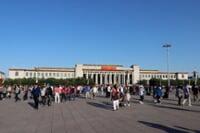
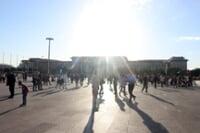
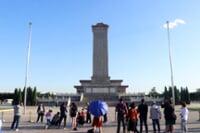
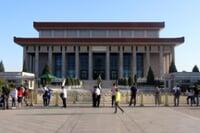
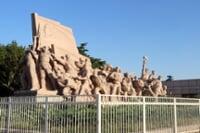
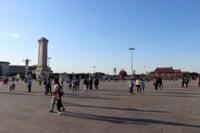
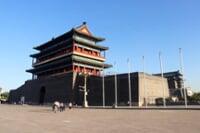
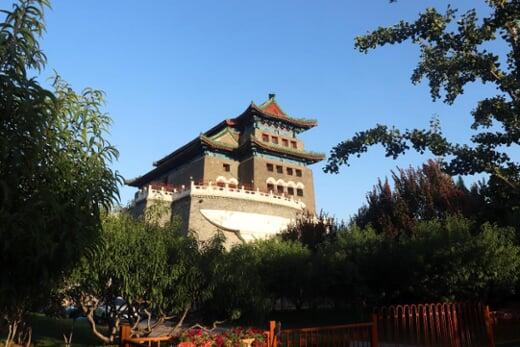
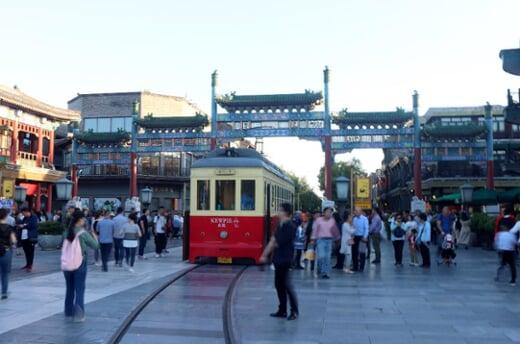
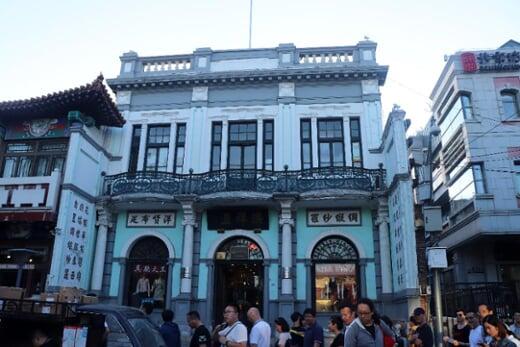
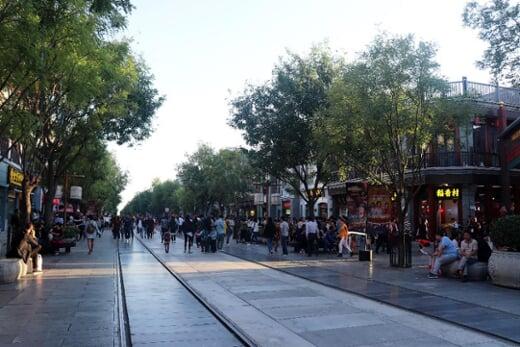
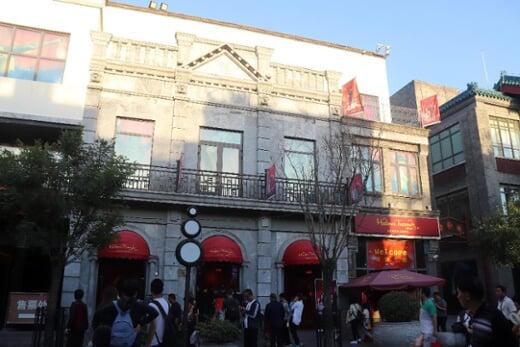
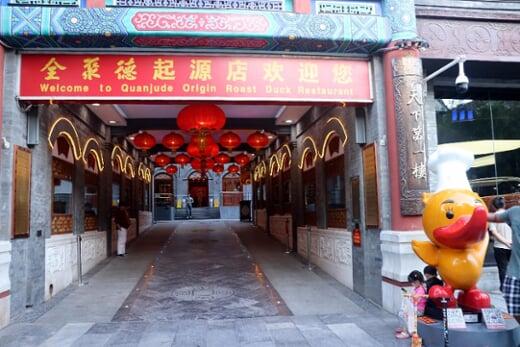
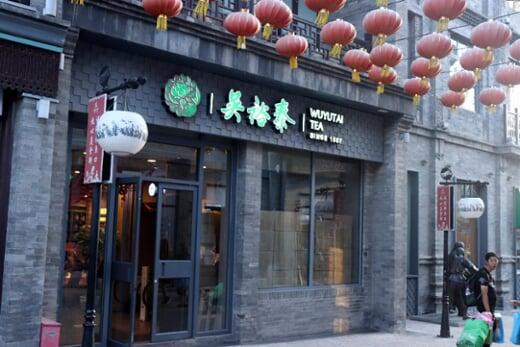
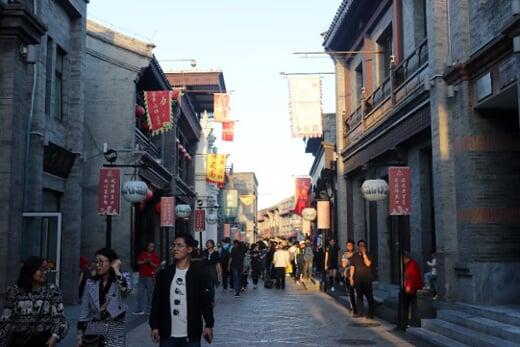
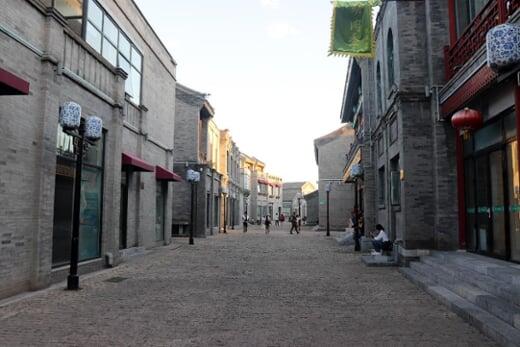
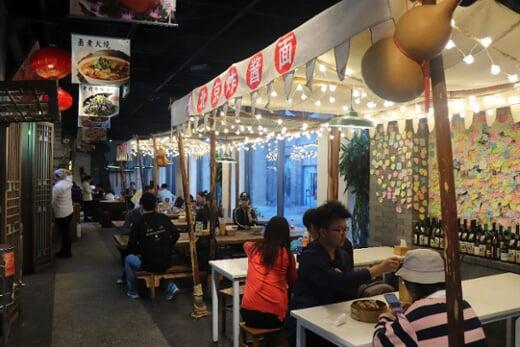
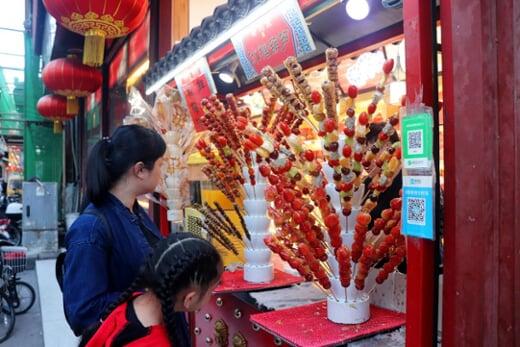
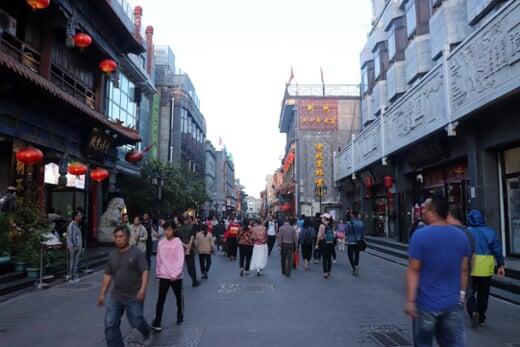
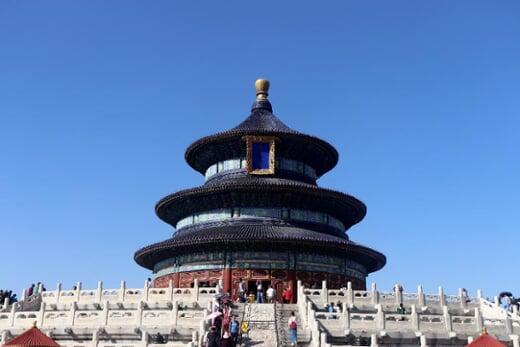
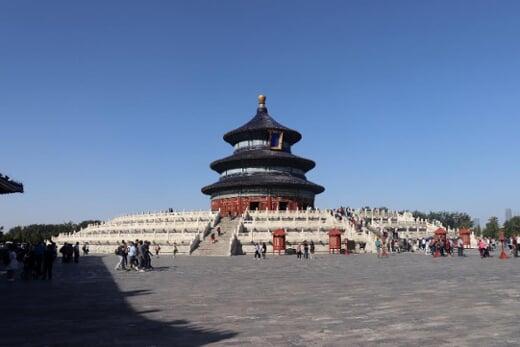
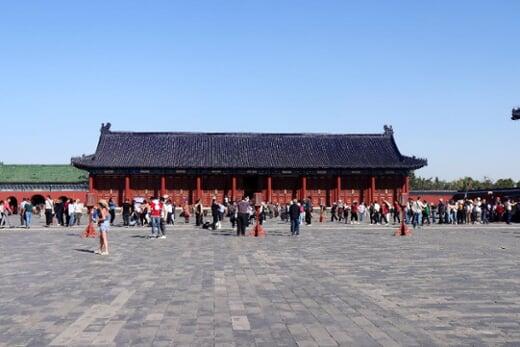
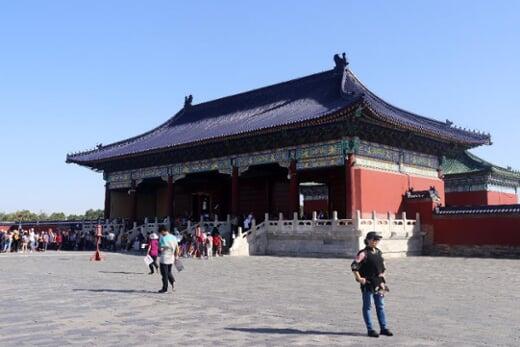
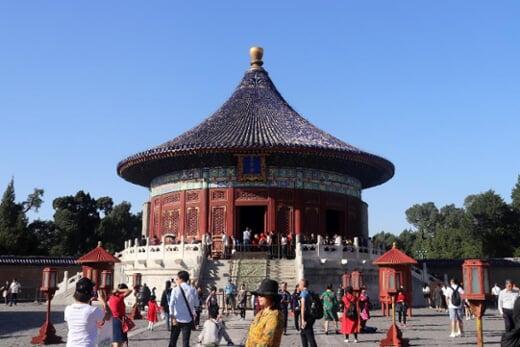
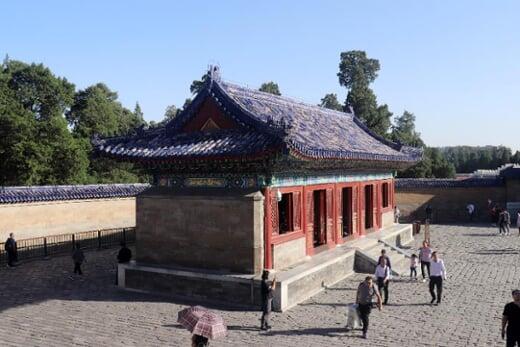
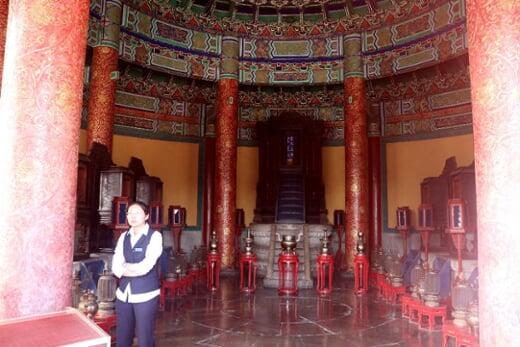
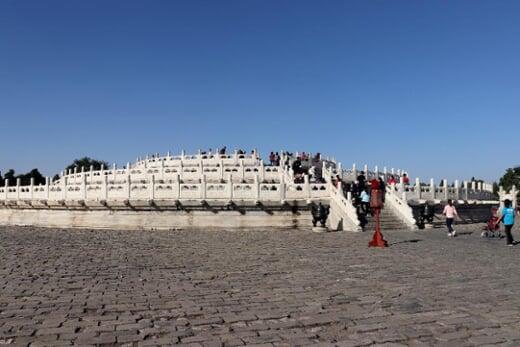
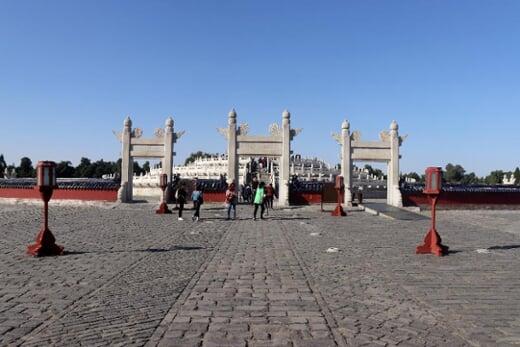
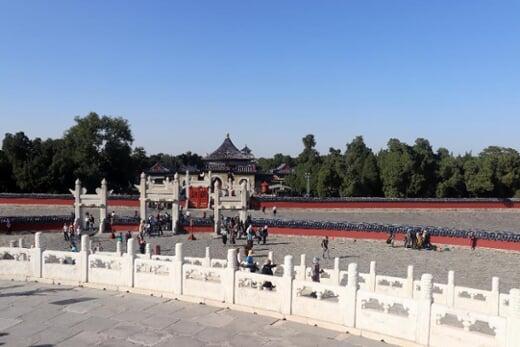
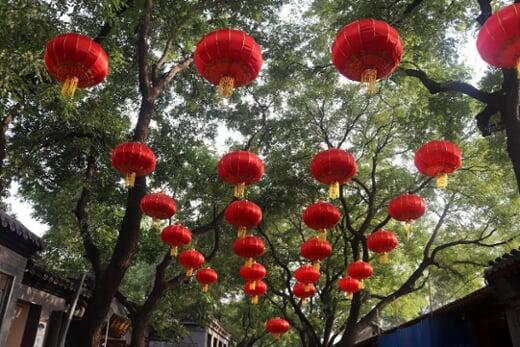
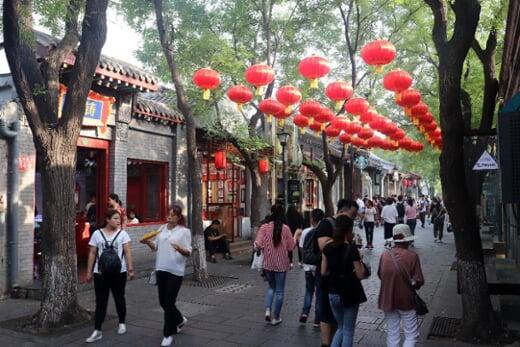
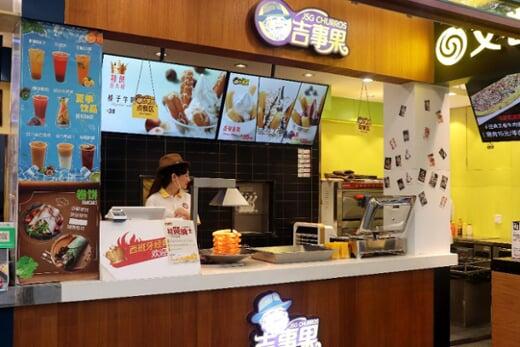
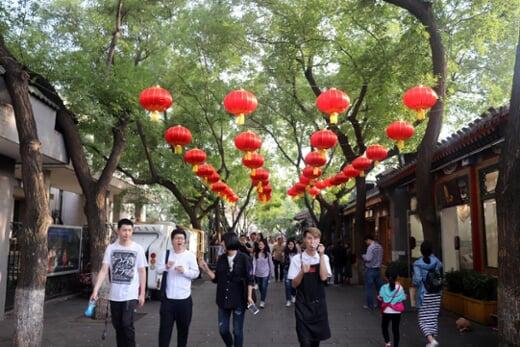
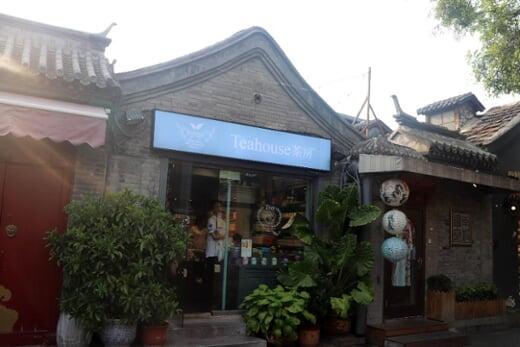
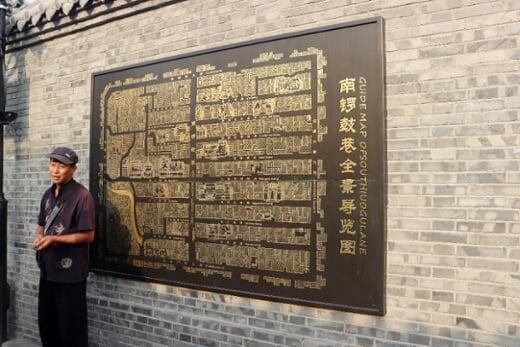
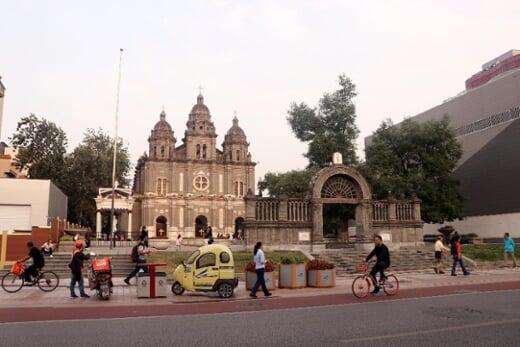
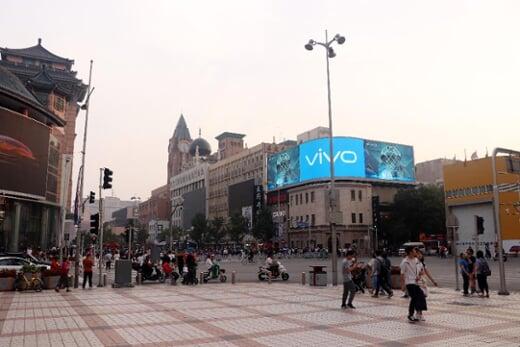
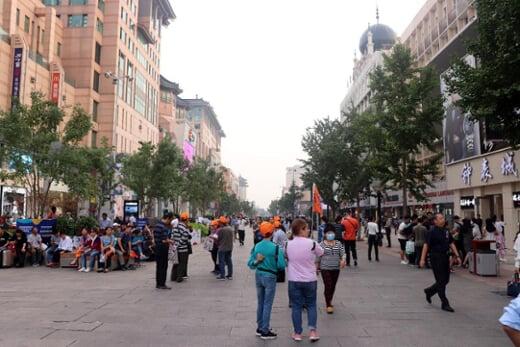
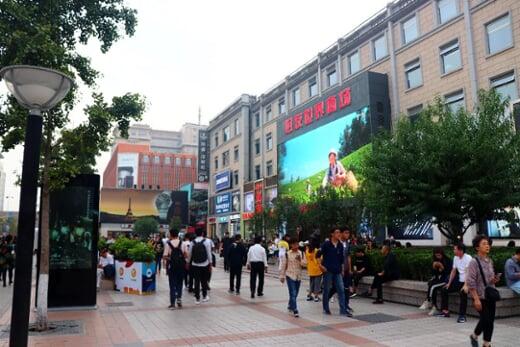
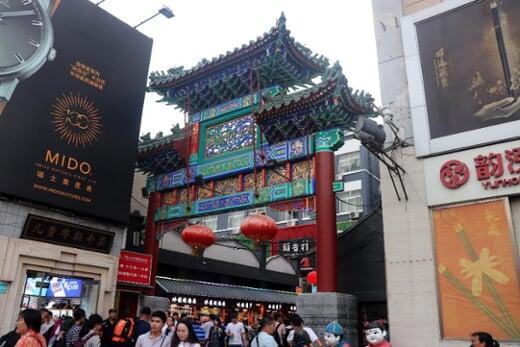
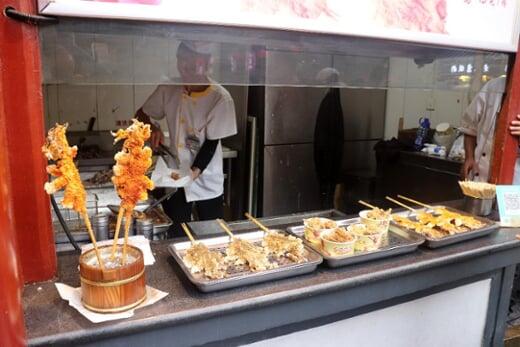
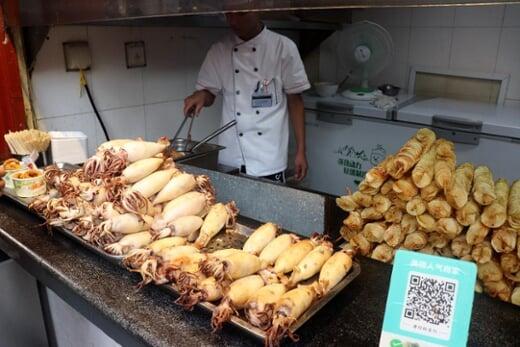
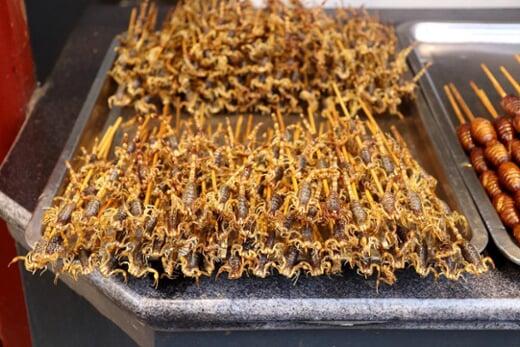
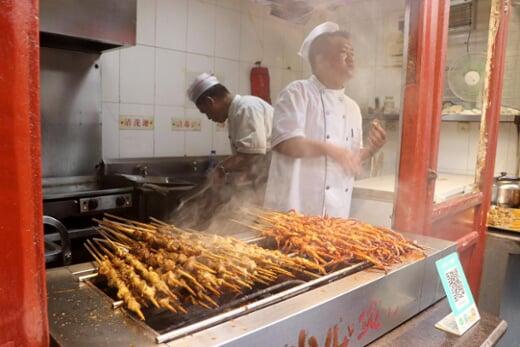
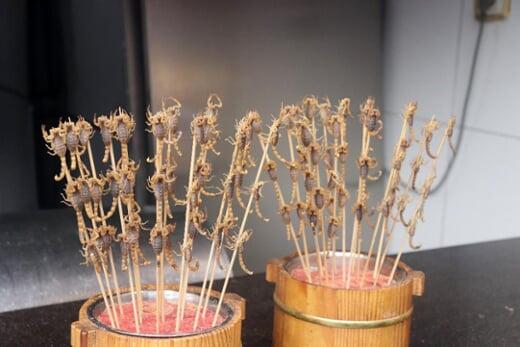
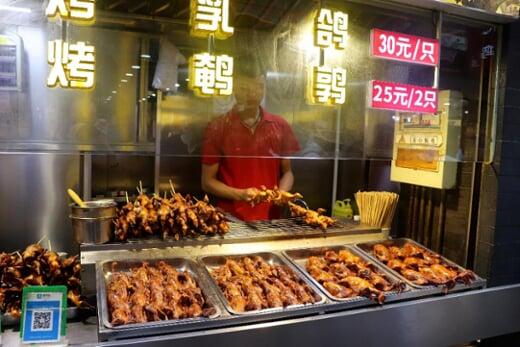
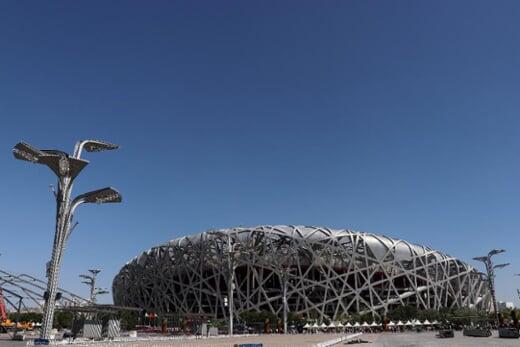
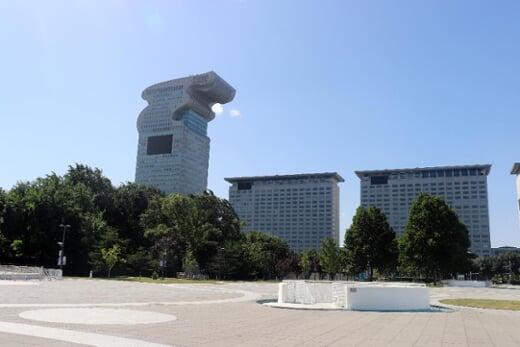
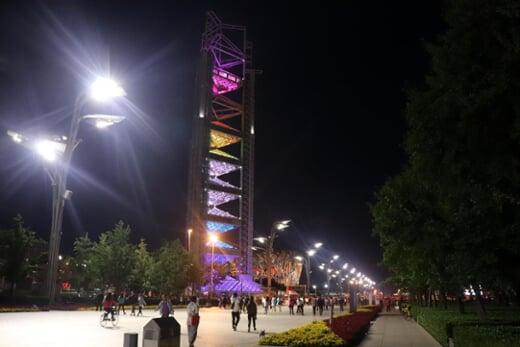
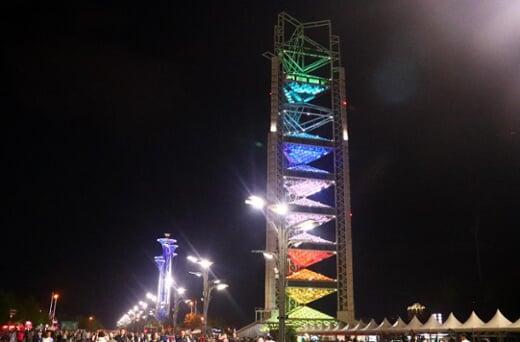
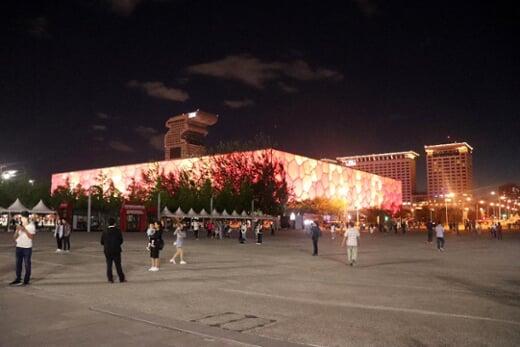
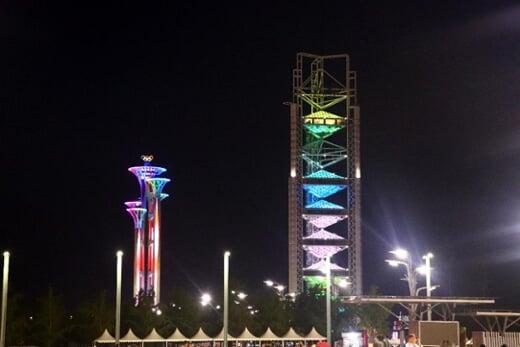
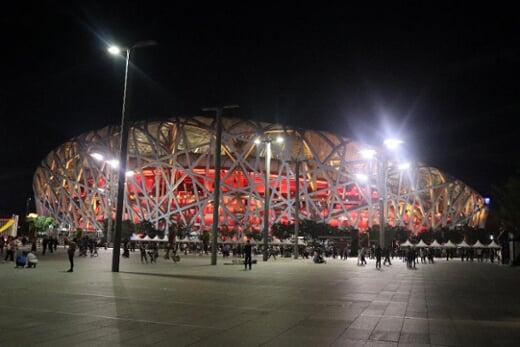
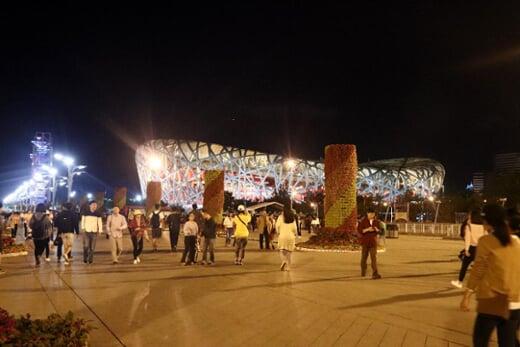
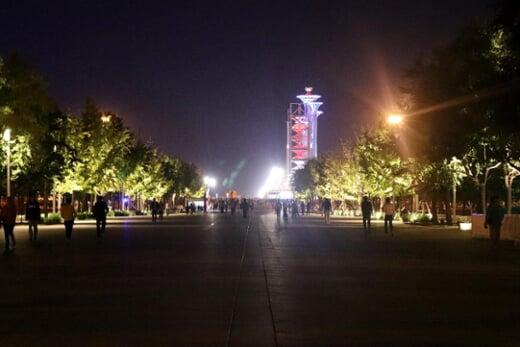

































.png)